I wasn’t surprised to read New York Daily News reporter Shaun King’s heartbreaking article about Jaylon Sewell. Jaylon is a Black student who “wasn’t allowed to attend class with dyed hair — ‘when white students with dyed hair were allowed to attend class.’”

Jaylon Sewell, photo courtesy of the Sewell family, via NY Daily News
Nor was I surprised to read that:
“Jaylon and more than 20 other black students at Neville High School have been repeatedly targeted and harassed by school administrators for their hairstyles — including the Odell Beckham style, other colored styles, braids, dreads, and even for hair deemed “too nappy” by administrators…”
In fact, the entire incident reminded me of a phrase I’ve used when talking about Black children in integrated schools:
The Jewish community does not let Nazis, Nazi sympathizers or systems designed by Nazis, have anything to do with the education of Jewish children.
Black people concerned about educating Black children should remember that.
Integration: Harsh Realities for Black Children
I’ve frequently written about the anti-Black discrimination Black kids face in schools. Whether they face suspension for wearing ethnically Black hair styles to school or if they are reprimanded for insubordination when they show up to school in Black bodies, using Black cultural mannerisms and expressions. I wrote about Tiana Parker, a Black student who was kicked out of school for wearing natural hair. I criticized schools like the Lorain Horizon school, an integrated school which banned Afros and small twisted braids. And I heavily criticized HBCUs like Hampton University for supporting anti-Blackness by enforcing a ban against natural hairstyles in their Business School program.
But as I wrote in this article about the Black student who was videotaped as she was tossed like a rag doll by a school safety officer: the Black community lost the integration battle when we agreed to integrate our children into school systems designed to enhance the broader society’s hatred of Black babies.
“…think about the Black children who were part of the first wave and integration, like the Little Rock Nine [and] think about what we gave up in exchange for the right to sit next to White children in school [and have access to their resources]… Think about the angry mob of racist White people those children had to walk past in order to get to the school doors. [What would possibly] make us believe that the teachers inside who would be teaching our kids felt any differently about them than the adults on the outside who threw rocks and racial slurs as they started the school day?”
And, yes, Black children like the Little Rock Nine and Ruby Bridges had it bad. But think about all those Black students who integrated into and attended racially hostile American schools with no guards at all.
While talk of integrating schools in places like New York City is the new en vogue conversation in race politics, it’s important that we question a lot of what we believe about the impact of integration on Black students.
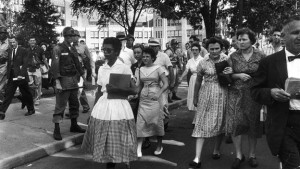
Black students integrate White schools while facing hostile, racist mobs. Photo Credit: www.history.com
Public Education: Failing Black Students Today
When compared to their White counterparts, by most measures and with few exceptions, the vast majority of Black children in American schools perform at dismal rates academically. They are the fastest growing group of children filling jail cells. They are suspended and expelled three times as often as White children, are subjected to harsher scrutiny and suffer from lower expectations from both teachers and authority figures.
Equally as significant, are the other systematic factors that follow Black students like an ever-present shadow. Black children face the same racially discriminatory burdens as the rest of the Black community. Their neighborhoods typically face racially skewed economic policies in housing and school funding, disproportionate unemployment, violence and other social ills.
As if that weren’t enough, Black children (regardless of social class) also battle with what Dr. Joy DeGruy calls racist socialization. She defines racist socialization as: the adoption of a white supremacist value system which has its roots in race-based slavery. At this value system’s foundation is the belief that white, and all things associated with whiteness (including intelligence and beauty), are superior; and that black and all things associated with blackness, are inferior.
As noted by educator, consultant and author Gary Howard, “It is no mere coincidence that the children of certain racial, cultural, linguistic and economic groups—those who have been marginalized by the force of Western White domination—are the same students who are now failing or underachieving at disproportionate rates in our nation’s schools.”
The Failed Logic of School Integration: Assimilation
When Black students first integrated into White schools, the American education system was ruled by assimilation logic. This is the belief that once Black students (and other students of color) “assimilated into White society, academic success would follow.” This logic ignored the fact that for decades, Black educators (with inferior resources) were able to produce brilliant Black thinkers who were dynamic community leaders who used their education to solve Black community issues.
This is why segregated schools, with inferior education resources, could produce honor roll students who were also part of the leadership in the Civil Rights Movement.
That said, there’s been a ton of research on the experiences of students of color since integration. That research shows that that schools still require Black students (and other students of color) to assimilate into Whiteness in order to excel. By doing so, today’s schools deny students of color access to their own culture, which is “the key resource that they bring to education.”
A report by the Heinz Endowment, Cultural Responsiveness: Racial Identity and Academic Success: A Review of Literature, reviewed more than 2800 studies that examined the connections between culturally responsive education (described more later), racial identity, resilience and achievement. Researchers found that requiring Black students to assimilate into Whiteness was failing Black students and students of color.
In fact, research shows that students of color “performed best in settings that built on their culture and promoted their racial identities.”
A recent study out of Harvard and University of Pittsburgh found that when Black parents empower their children with positive racial socialization, they perform better academically. In fact, researchers found that “racial pride” was the single most important factor in protecting Black students against racial discrimination. Racial pride had a “direct impact on the students’ grades, future goals, and cognitive engagement.”
As poignantly asked by Gary Howard:
“How is it possible, with so much research and information available about multicultural issues today, that prospective educators can complete their entire teacher education and certification program without gaining a deeper grasp of social reality?”
Indeed. Because despite that promising research, most Black children continue to struggle in an education system that was not designed for them.
“Access” to White Resources is Not Everything
My husband and I provide professional development workshops for educators on racism in school. We once asked a group of educators how racism show up in their students’ education. One well meaning teacher said “well it’s a bit subtle, but the books are written by White authors, the names of the schools are usually White male names, the pictures on the walls are of White people, etc. It’s subtle – but it’s there.”
I thanked him for his answer but then pushed back by questioning how “subtle” this racism was:
“Let’s imagine,” I told the group, “that a community of White parents arrives to bring their White children to school on the first day of the term. Imagine that the school is named the ‘LaKeisha Renae Jenkins Elementary School’, imagine that the books in all of the classrooms were written by Black authors and imagine that the pictures on the walls are of all Black and Brown faces. Not only are those White parents NOT going to let their kids attend school that day, but they might shut the school down for radical racist indoctrination. Yet we subject Black children to this every single day and expect them to succeed…and blame their parents when they don’t.”
Before Black children integrated White schools, White educators used materials that were designed to accommodate the learning needs of White students. That didn’t change when Black students arrived. The books that were used, the authors they studied, the mathematicians, scientists, writers, and philosophers they analyzed, were all White. And they were all considered more valuable than Black thinkers, writers, scientist, just because they were White. White educators were trained to create lesson plans and taught to frame subjects by centering the specific learning needs of White children.
White children were born into a system carefully constructed and maintained to provide them with racially-based access to benefits and resources at every turn. White privilege ensures they may never have to wrestle with the fact that their social safety nets were sewn together with the fabric of racism and threads of racist oppression. Their lifetime of privilege born out of the brutality of slavery and protected with the violence of Jim Crow.
It should go without saying that the learning needs of White children (i.e. the descendants of the slave holding caste), are very different than the learning needs of Black children (i.e. the descendants of those who were enslaved). Because Black children were born into a manufactured legacy of racial inferiority. A legacy that ensures that by the age of five they (and their White counterparts) have been thoroughly indoctrinated to believe that Black skin represents a curse.
An education designed to meet the needs of White children is extremely harmful to the psychological, academic and professional developmental needs of Black children. Sadly, forcing Black children to participate in an educational process designed for those who benefit from the oppression of Black people is directly related to the fact that: Black children are suspended more often and more harshly than their White counterparts. It is one of the main reasons why Black girls and Black boys are the primary passengers on the trains driving up and down the school to prison pipeline. This is why those and other disparities start as early as preschool.
So, of course, brilliant Black students like Jaylon Sewell, Tiana Parker and all of the other phenomenal Black girls and boys are marginalized in school. Because the schools were designed to maintain their social marginalization.
That. Is. Not. Progress.
Black children need a culturally responsive education: one that is both culturally competent and designed to meet their specific needs and the needs of the communities in which they live.
Culturally Responsive Teaching: What Black (All) Children Need (Regardless of Where they Learn)
Professor of Education Dr. Geneva Gay defines Culturally Responsive Teaching” as
“teaching that uses the cultural knowledge, prior experiences, frames of reference, and performance styles of ethnically diverse students to make learning encounters more relevant to and effective for them. It teaches to and through the strengths of these students.”
Culturally Responsive Teaching (CRT) is a dynamic approach to teaching that structures education around the needs of the students. Regardless of whether the school is integrated or not. It’s important to note that both segregated and integrated schools can either succeed or fail at this endeavor. CRT empowers educators and parents to improve academic outcomes for Black children and it is an education framework that requires us to center the specific needs of marginalized students. CRT is grounded in the abundance of research that demonstrates that “culturally responsive pedagogy and positive racial identity promote academic achievement and resilience.”
In other words, it is an education format that creates educational environments that support their specific needs as Black children and validates their culture while preparing them to navigate the realities of racism. It prepares them to use their education to meet the needs of the Black community, instead of preparing them to only interview with and work for their White counterparts.
This type of education is necessary for all students. In fact, White children who are growing up to take advantage of their White privilege can do so because they receive a culturally responsive education every day.
As Khalilah Brann, Associate Research Scientist at NYU Metro Center and specialist in culturally responsive education once said:
“teachers and schools are always culturally responsive. The question is, to whose culture are they responding?”
Research shows that when Black children receive an education tailored to meet their specific learning needs, they perform better in school. They are more likely to go to college and are more likely to be empowered to use their education to address the issues plaguing their community. But shifting paradigms is no easy task. It requires the knowledge, skill sets and the will of Black parents and community to make it happen.
We must remember the following words by Malcolm X:
“Only a fool would let his enemy educate his children.”
In light of the dismal way Black children are floundering in schools originally designed to accommodate the needs of White children, it would seem Brother Malcolm was correct.
Black parents get regular reports of abuses inflicted on Black children in public schools. It’s time to stop asking “why” because we know why. Like I said, our Jewish brothers and sisters don’t let people who hate them educate their children.
It’s now our fault if we continue to feed our children into school systems designed to destroy them.
As parents, community members and people charged with caring for Black children, it’s time we start addressing the tough questions. It’s time we start doing the hard work of caring for our own. That includes banning together as parents to re-define what a “good education” looks like for Black children (hint: it’s not one that only prepares them to work for White people). It means demanding our children get their needs met, whether they are in racially diverse or segregated schools.
We must ensure that Black children get an education that empowers them to meet the needs of the Black communities from which they come. Which means we also have to figure out how to fund it, nurture it and protect it. Because one thing we now know about living in Donald Trump’s era of #HonestRacism: any solution to racism that requires White people to fund it, consent to or support it is a non-starter. No place has that been more true than when it comes to the education of Black children.
**************
Portions of this article originally appeared in a blog written by the author for the Center for Law and Social Justice.
Lurie Daniel Favors is an author, attorney and the general counsel at a racial-justice law center in Brooklyn, N.Y. Get your copy of her e-book, “Afro State of Mind: Memories of a Nappy Headed Black Girl” here! Follow her on Twitter, or Instagram, “like” Afro State of Mind on Facebook or catch up on her latest Youtube videos! Opinions expressed here belong to AfroStateOfMind(tm) only and do not represent those of any other institution.
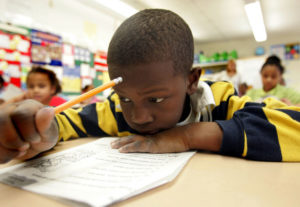

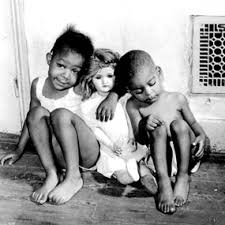
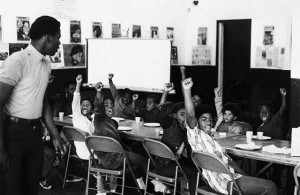



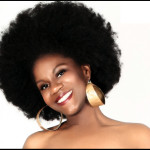
Phenomenal! Thank you for consistently spreading TRUTH!
Thank you!